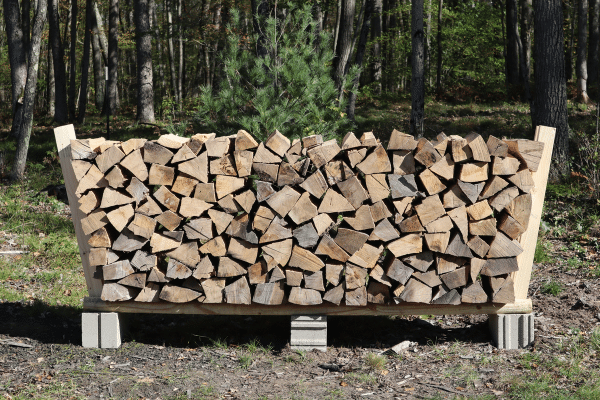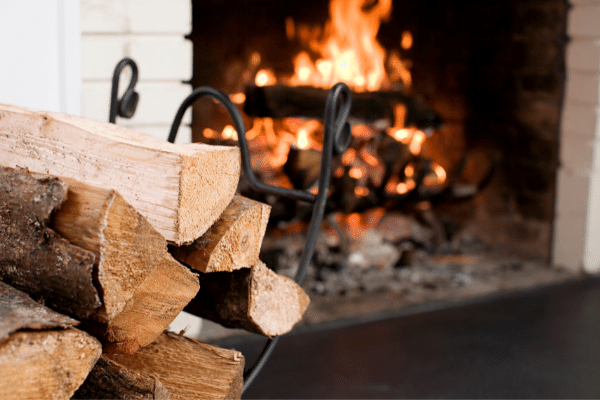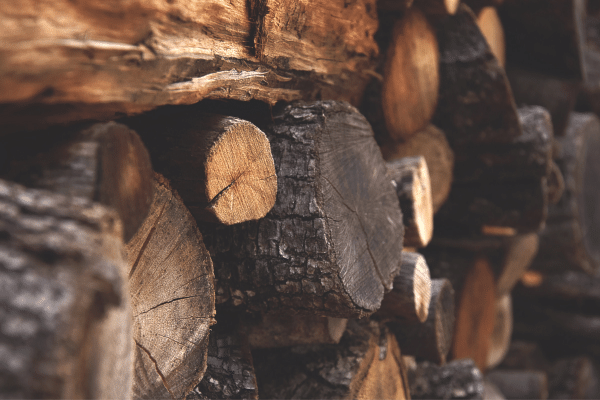- Home
- Types Of Firewood
- Is Russian Olive Good Firewood
Is Russian Olive Good Firewood?
This post may contain affiliate links so I earn a commission.
Is Russian olive good firewood?
There are pluses and minuses, as you will see.
Winter started early in many areas of the country this year, so people who heat their homes with wood had to dip into their wood piles sooner than they may have planned.
As you know, the variety of wood that you burn is key to the efficiency of your wood-burning fireplace or wood stove.
Let’s look at one type of wood, the Russian olive, to see how it measures up against other varieties of wood.
An Overview Of The Russian Olive Tree
The Russian olive tree is, as the name implies, native of Russia and parts of eastern Europe and western Asia.
Yes, the tree does produce edible olives if it is located in a warm climate with optimal sunlight and rain.
Even though conditions need to be right for the tree to produce olives, the Russian olive thrives in colder climates, in poor soil, and in areas with low rainfall.
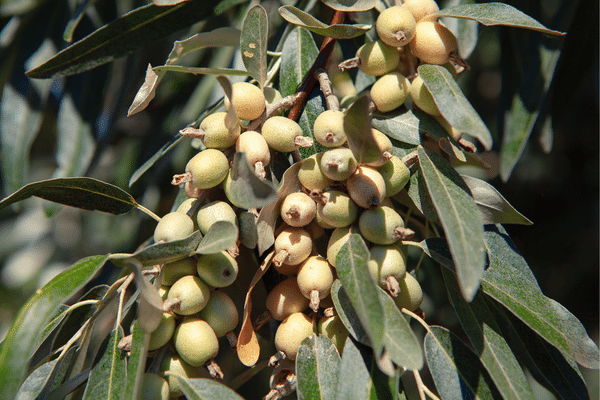
Even the seedlings are tough.
The Russian olive has a higher-than-average seedling survival rate.
The tree usually reaches a height of between 20 and 35-feet, but the trunk remains rather narrow.
It is an attractive tree that’s considered an ornamental plant.
In the spring, the tree produces flowers with a pleasant scent, however the bark and wood of the tree emit a less-than-desirable odor.
The yellow foliage contrasts nicely with the tree’s black bark.
For these reasons, the Russian olive was planted across Europe as an ornamental tree from the late 1800s to the 1970s.
Not long after, the tree was introduced into North America.
It grows fast and has a quick-spreading root system, so it was often planted into windbreaks, in places with poor soil, or in areas at risk for soil erosion.
Is Russian Olive Good Firewood - An Invasive Species
Up until the 1970s, no one gave a second thought to bringing non-native trees into North America.
But scientists began to see the dangers of this practice in the 1970s and 1980s.
Like many other non-native plant species, the Russian olive has few natural enemies in its new environment.
Birds and animals readily dispersed the tree’s seeds.
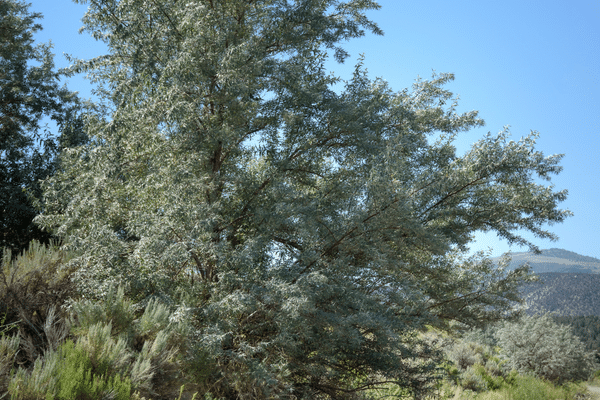
Add to that, the species’ high seedling survival rate and widespread root system and all the factors are in place for the Russian olive to become an invasive species that pushes out native plants and takes over an area.
In recent decades, the Russian olive has fallen out of favor with landscapers, foresters, and gardeners.
Since Russian olives have some drawbacks – lots of aggressively growing seedlings, smelly bark, messy dropped olives – many homeowners want to remove them.
If you are cutting down some trees, you may as well turn them into firewood, right?
In other instances, that would make perfect sense, but with the Russian olive, you may want to think twice.
Let’s go through the pros and cons of the Russian olive as firewood.
Is Russian Olive Good Firewood - Pros
Russian Olive Burns Hot
One of the perks of burning Russian olive as firewood is that it produces a hot fire.
Russian olive burns at 23 million BTUs per cord.
That’s roughly the same as white oak and white ash.
It is a dense, heavy wood so it has a decently long burn time.
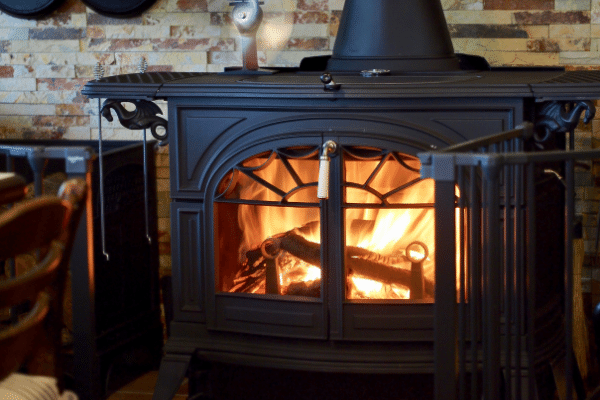
Well-Seasoned Russian Olive Has Little Odor
Well-seasoned Russian olive firewood burns with minimal odor and smoke and is even appropriate for fireplaces.
When burned, Russian olive firewood does not produce a lot of coals, but it also doesn't leave behind a lot of ash.
Russian Olive Isn’t a Sappy Wood
Russian olive produces very little sap, which is beneficial when cutting the wood, but it still takes a minimum of twelve months for the wood to thoroughly dry out enough to use as firewood.
Burning Is A Good Way To Get Rid Of Unwanted Russian Olive
Another benefit – and perhaps the biggest reason why Russian olive is used as firewood – is that it’s the best way to get rid of these invasive trees.
Is Russian Olive Good Firewood - Cons
Unseasoned Russian Olive Is Stinky
The wood and bark of the Russian olive produces a smell that many people find offensive.
The smell is drastically reduced when the wood is properly seasoned.
If you attempt to burn green Russian olive, you will be rewarded not only with the strong, pungent odor, but with excess smoke.
Always make sure your Russian olive firewood is completely dry and seasoned before you toss it in your wood stove.
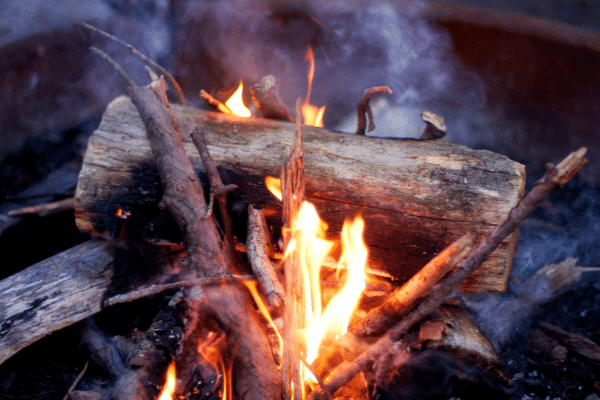
Russian Olive Doesn’t Catch Fire Easily
The dense Russian olive wood makes starting a fire challenging.
You might struggle with getting a fire going if you use just Russian olive.
It is better to mix the Russian olive with other types of wood when starting a fire.
Once the fire is well-established, pieces of well-seasoned Russian olive will burn for a long time.
Russian Olive Is Heavy
Woodcutters should bear in mind that the wood of the Russian olive tree is heavier than it looks.
Don’t try to tackle a Russian olive on your own.
Recruit a buddy or two to help you cut, split, carry, and stack the wood.
There’s Not A Lot Of Wood In A Russian Olive
Russian olive trees don’t grow very tall and appear more like large bushes with many branches.
Since the trees don’t have large trunks, you won’t get big pieces of firewood from the Russian olive.
You’ll Need a Log Splitter
In general, the trees’ trunks, while heavy and dense, split easily, however older Russian olives become harder and denser.
If you are removing an older Russian olive and cutting the trunk for firewood, you will need to use a hydraulic log splitter.
It is nearly impossible to hand split older Russian olive wood with a splitting maul.
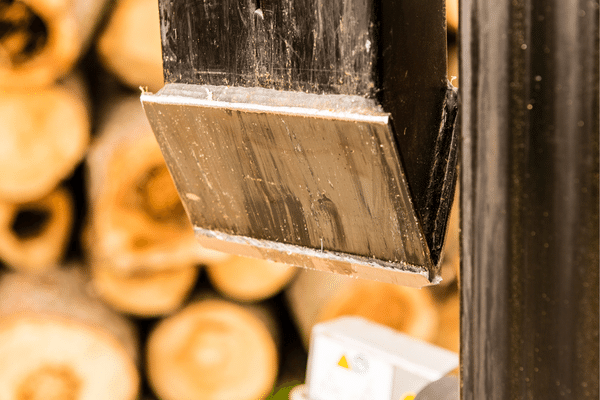
Russian Olive Can Be Unstackable
The bark of the Russian olive tree is rough and uneven.
It can often be difficult to neatly stack the wood … and keep it stacked.
Likewise, the trees’ branches are gnarled and twisted so they can also be frustrating to stack.
Is Russian Olive Good Firewood - Overall
As you ponder these pros and cons, you probably notice that there are a few more cons than pros.
So, Is Russian olive good firewood?
The answer is that it can be under the right circumstances.
It does, after all, produce a long, hot fire.
But it can be a work-out to cut, split, and stack.
Russian olive trees, at least in North America, are invasive, non-native trees.
Removing them will allow the area to eventually recover its natural balance of plant life.
The most responsible way to dispose of Russian olive wood is to burn it … and if you are going to burn it, you may as well get the benefit of the heat, right?
